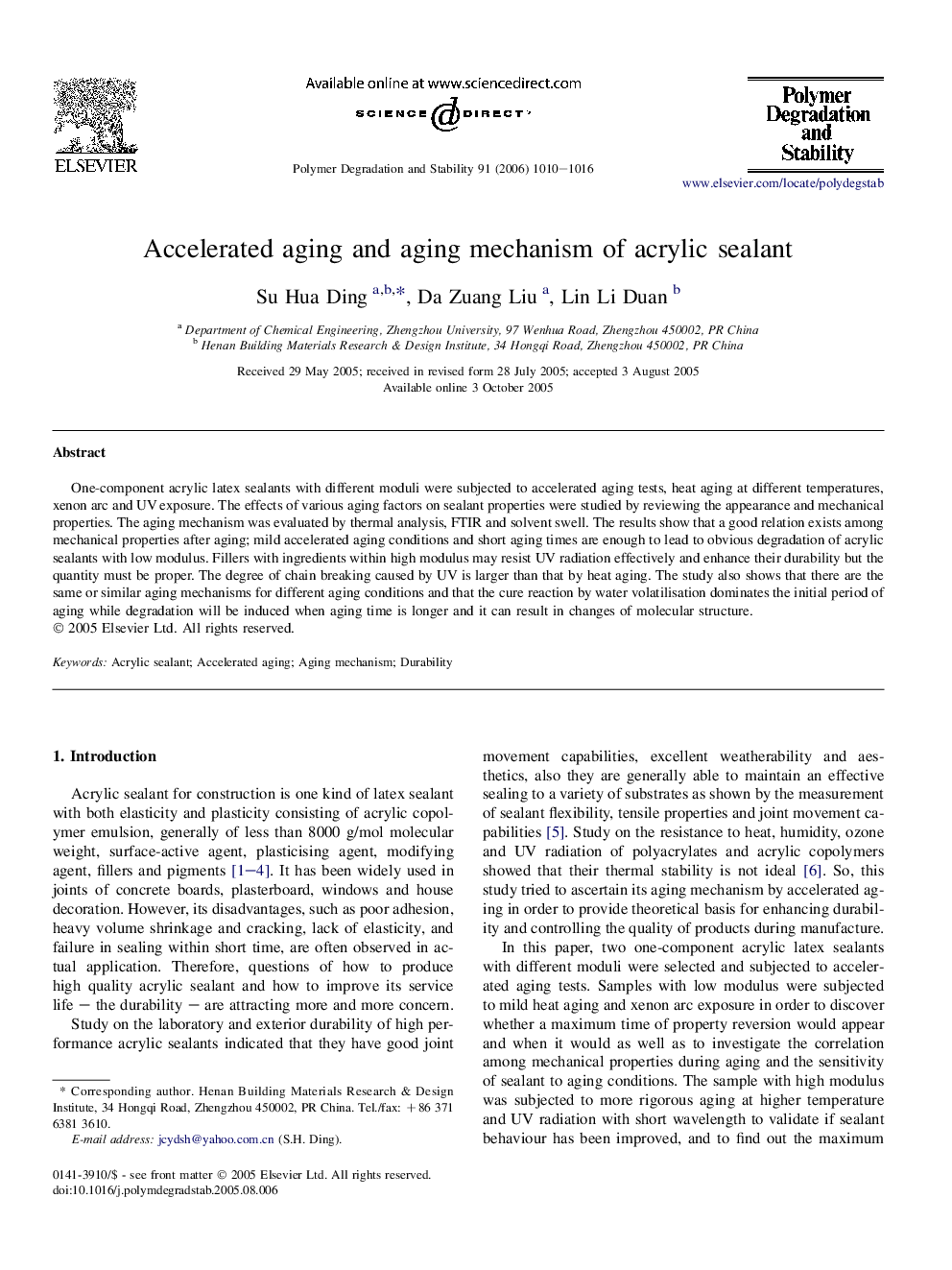| Article ID | Journal | Published Year | Pages | File Type |
|---|---|---|---|---|
| 5204705 | Polymer Degradation and Stability | 2006 | 7 Pages |
Abstract
One-component acrylic latex sealants with different moduli were subjected to accelerated aging tests, heat aging at different temperatures, xenon arc and UV exposure. The effects of various aging factors on sealant properties were studied by reviewing the appearance and mechanical properties. The aging mechanism was evaluated by thermal analysis, FTIR and solvent swell. The results show that a good relation exists among mechanical properties after aging; mild accelerated aging conditions and short aging times are enough to lead to obvious degradation of acrylic sealants with low modulus. Fillers with ingredients within high modulus may resist UV radiation effectively and enhance their durability but the quantity must be proper. The degree of chain breaking caused by UV is larger than that by heat aging. The study also shows that there are the same or similar aging mechanisms for different aging conditions and that the cure reaction by water volatilisation dominates the initial period of aging while degradation will be induced when aging time is longer and it can result in changes of molecular structure.
Related Topics
Physical Sciences and Engineering
Chemistry
Organic Chemistry
Authors
Su Hua Ding, Da Zuang Liu, Lin Li Duan,
